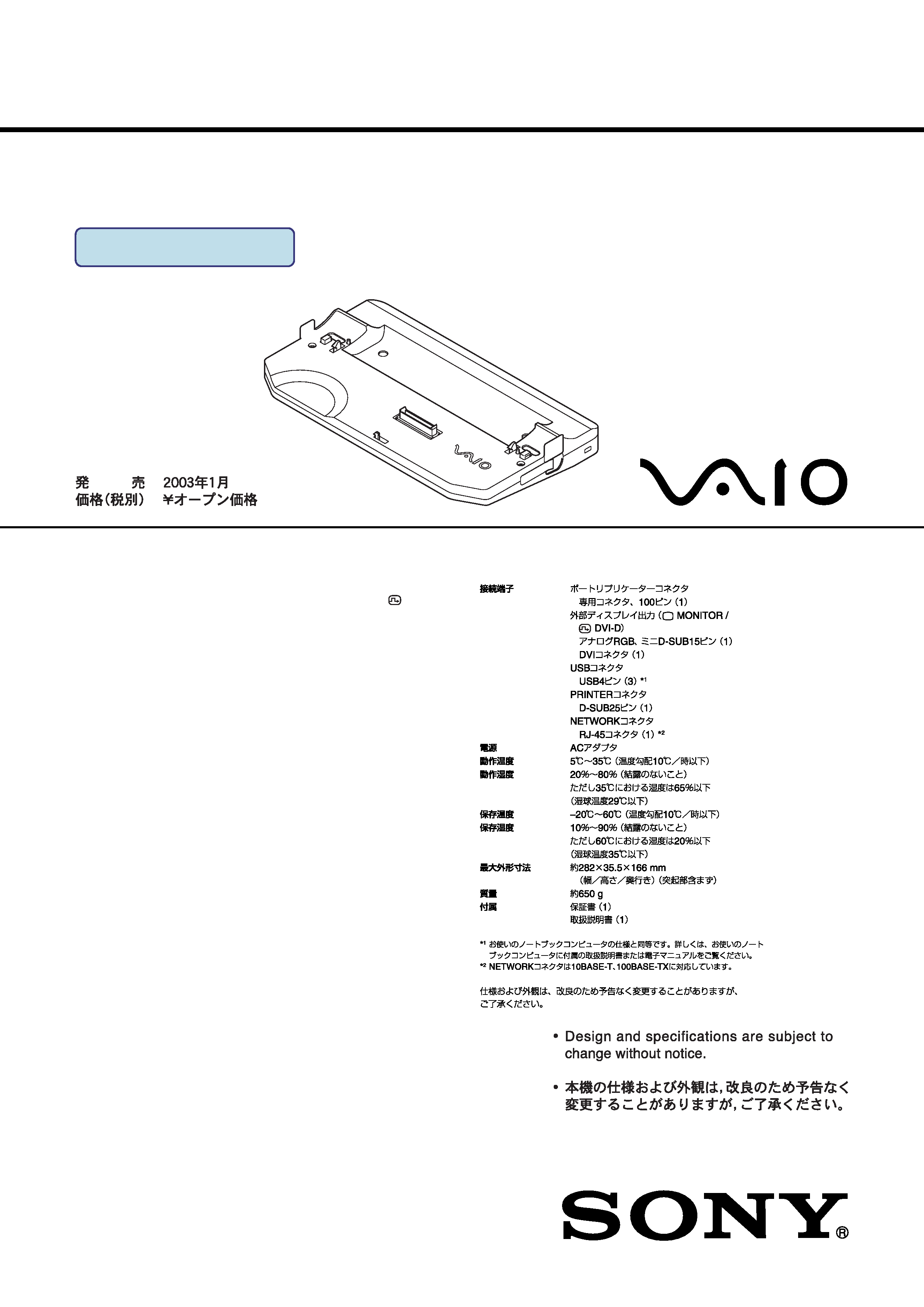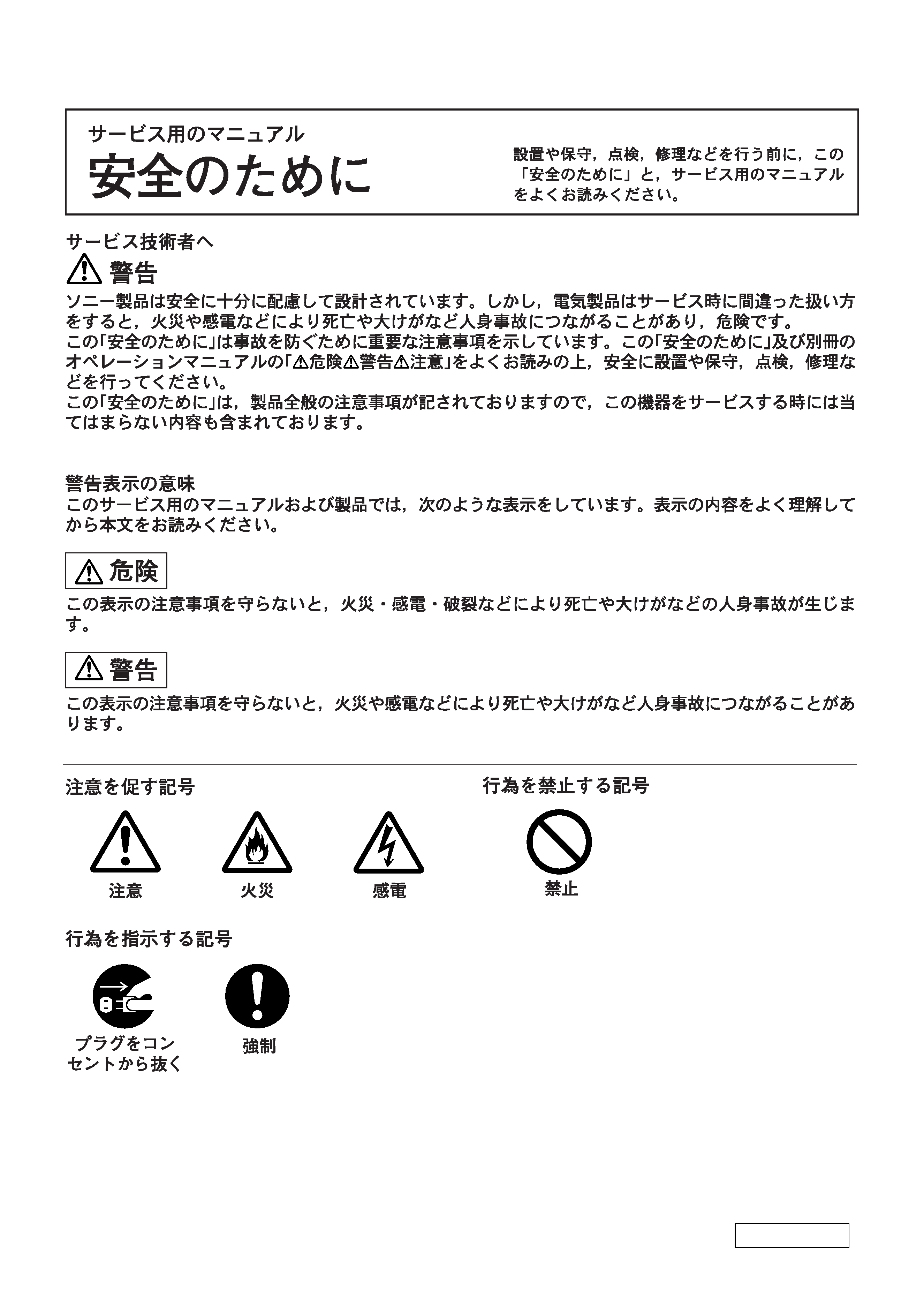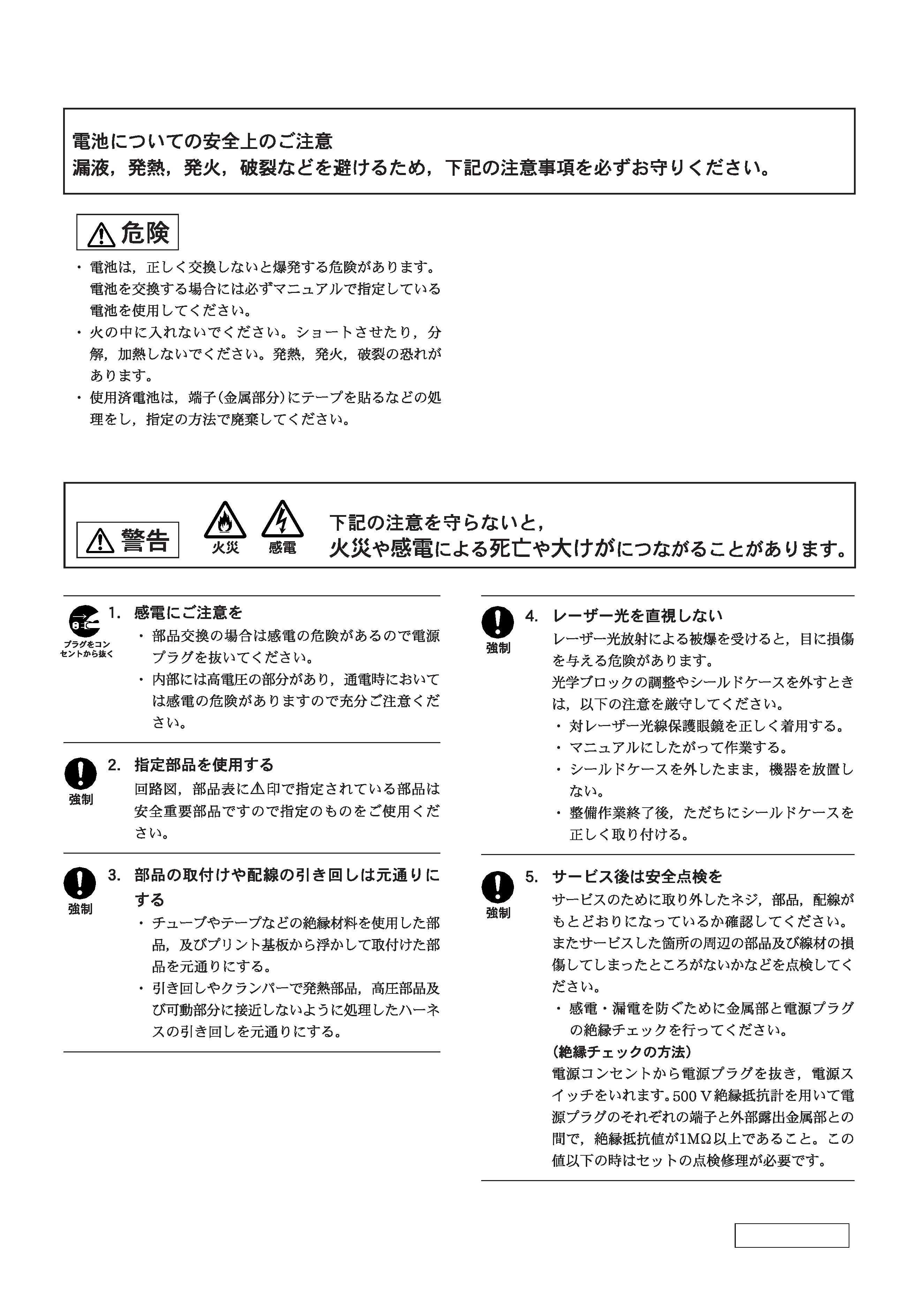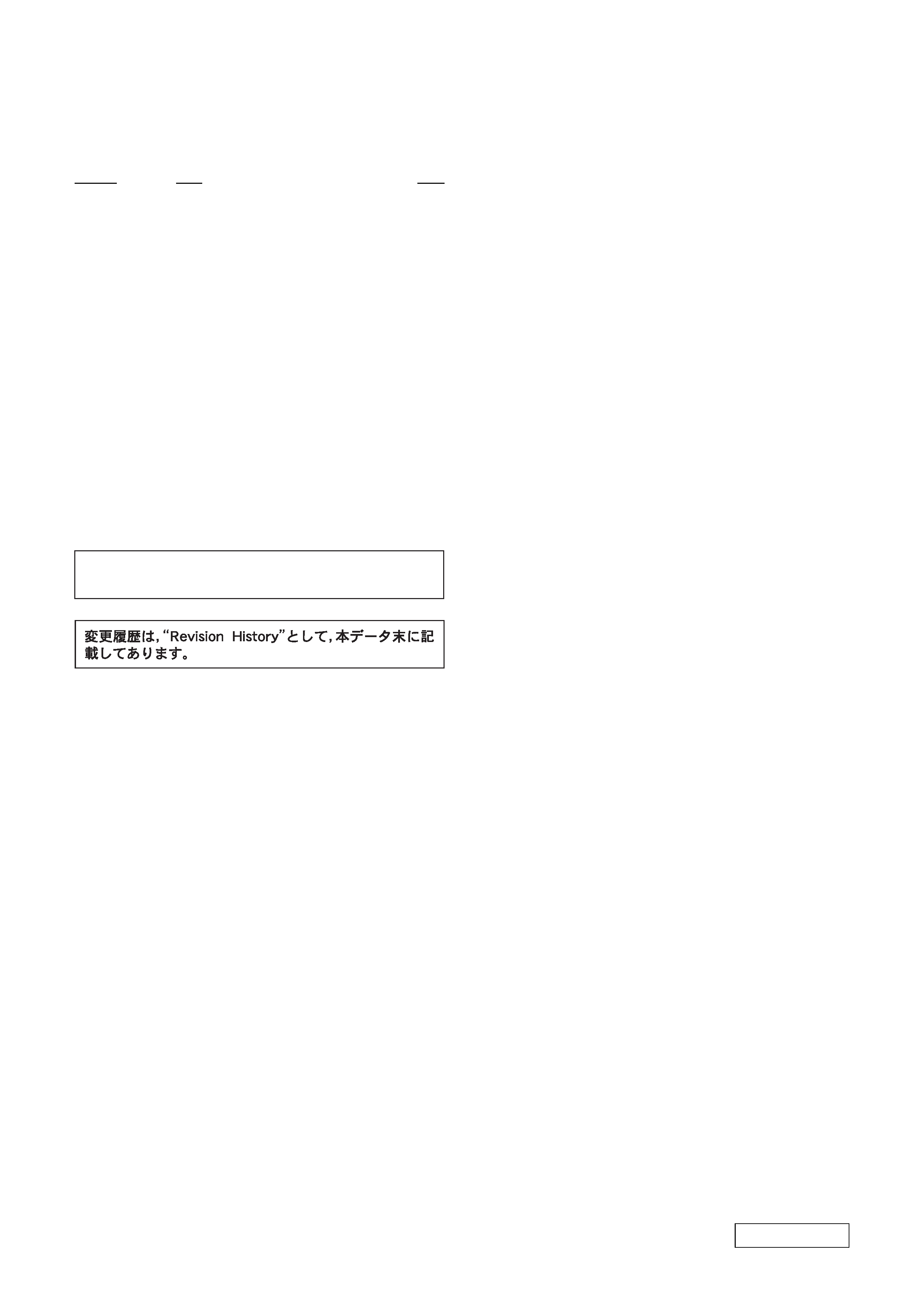
Conf
idential
SERVICE MANUAL
Connectors
Port replicator connector: 100-pin custom connector (1)
External display output (
a MONITOR/
DVI-D)
analog RGB, mini D-sub 15-pin (1)
DVI connector (1)
USB connector: USB 4 pin (3)*1
PRINTER connector: D-SUB 25 pin (1)
NETWORK connector:
RJ-45 connector (1)*2
*1 The specifications are the same as those for the notebook
you are using. For details, refer to the manuals provided
with your notebook.
*2 There is a Network connector for the connection with
10 BASE-T, 100 BASE-TX.
Power requirements
AC adapter
Operating temperature
41°F to 95°F (5°C to 35°C)
(temperature gradient less than 18°F (10°C)/hour)
Operating humidity
20 % to 80 % (not condensed), provided that humidity
is less than 65 % at 95°F (35°C)
(hygrometer reading of less than 84°F (29°C))
Storage temperature
4°F to 140°F (20°C to 60°C)
(temperature gradient less than 18°F (10°C)/hour)
Storage humidity
10 % to 90 % (not condensed), provided that humidity
is less than 20 % at 140°F (60°C)
(hygrometer reading of less than 95°F (35°C))
Dimensions
Approx. 11.1
× 1.4 × 6.6 inches (w/h/d)
(Approx. 282
× 35.5 × 166 mm)
Mass
Approx. 23.0 oz. (650 g)
Supplied accessories
Operating instructions (1)
Design and specifications are subject to change without notice.
PCGA-PRV1
9-876-092-02
PORT REPLICATOR
Specifications
For Japanese Area
J Model
For American Area
US Model
Canadian Model
For European Area
AEP Model
UK Model
For Asian/Oceania/
South Africa Area
Chinese Model
Lineup: PCGA-PRV1
Japanese Model
Ver. 2 2003I
Revision History

2
PCGA-PRV1 (J/AM/EU/AO)
Confidential
Service and Inspection Precautions
1. Obey precautionary markings and instructions
Labels and stamps on the cabinet, chassis, and components identify areas
requiring special precautions. Be sure to observe these precautions, as
well as all precautions listed in the operating manual and other associated
documents.
2. Use designated parts only
The set's components possess important safety characteristics, such as
noncombustibility and the ability to tolerate large voltages. Be sure that
replacement parts possess the same safety characteristics as the originals.
Also remember that the 0 mark, which appears in circuit diagrams and
parts lists, denotes components that have particularly important safety
functions; be extra sure to use only the designated components.
3. Always follow the original design when
mounting parts and routing wires
The original layout includes various safety features, such as inclusion of
insulating materials (tubes and tape) and the mounting of parts above the
printer board. In addition, internal wiring has been routed and clamped so
as to keep it away from hot or high-voltage parts. When mounting parts or
routing wires, therefore, be sure to duplicate the original layout.
4. Inspect after completing service
After servicing, inspect to make sure that all screws, components, and wiring
have been returned to their original condition. Also check the area around
the repair location to ensure that repair work has caused no damage, and
confirm safety.
5. When replacing chip components...
Never reuse components. Also remember that the negative side of tantalum
capacitors is easily damaged by heat.
6. When handling flexible print boards...
· The temperature of the soldering-iron tip should be about 270
°C.
· Do not apply the tip more than three times to the same pattern.
· Handle patterns with care; never apply force.
Caution: Remember that hard disk drives are easily damaged by
vibration. Always handle with care.
Caution Markings for Lithium/Ion Battery - The following or similar
texts shall be provided on battery pack of equipment or in both the
operating and the service instructions.
CAUTION: Danger of explosion if battery is incorrectly replaced.
Replace only with the same or equivalent type recommended by
the manufacturer. Discard used batteries according to the
manufacturer's instructions.
CAUTION: The battery pack used in this device may present a fire
or chemical burn hazard if mistreated. Do not disassemble, heat
above 100°C (212°F) or incinerate.
Dispose of used battery promptly.
Keep away from children.
CAUTION: Changing the back up battery.
·Overcharging, short circuiting, reverse charging, multilation
or incineration of the cells must bi avoided to prevent one or
more of the following occurrences; release of toxic materials,
release of hydrogen and/or oxygen gas, rise in surface
temperature.
· If a cell has leaked or vented, it should be replaced
immediately while avoiding to touch it without any protection.
Information in this document is subject to change without notice.
Sony, VAIO and CLIE are trademarks or registered trademarks of
Sony. Microsoft, Windows, Windows Media, Outlook, Bookshelf
and other Microsoft products are trademarks or registered trademarks
of Microsoft Corporation in the United States and other countries.
The word Bluetooth and the Bluetooth logo are trademarks of
Bluetooth SIG, Inc. AMD, the AMD logo, other AMD product names
and combinations thereof are trademarks of Advanced Micro
Devices, Inc. Intel Inside logo, Pentium and Celeron are trademarks
or registered trademarks of Intel Corporation.Transmeta, the
Transmeta logo, Crusoe Processor, the Crusoe logo and
combinations thereof are trademarks of Transmeta Corporation in
the USA and other countries. Graffiti, HotSync, PalmModem, and
Palm OS are resistered trademarks, and the Hotsync logo and Palm
are trademarks of Palm, Inc. or its subsidiaries. (M) and Motrola
are trademarks of Motrora, Inc. Other Motrola products and services
with (R) mark like Dragomball are the trademarks of Motrola, Inc.
All other names of systems, products and services in this manual
are trademarks or registered trademarks of their respective owners.
In this manual, the (TM) or (R) mark are not specified.

3
PCGA-PRV1 (J/AM/EU/AO)
Confidential

4
PCGA-PRV1 (J/AM/EU/AO)
Confidential

5
PCGA-PRV1 (J/AM/EU/AO)
Confidential
TABLE OF CONTENTS
Section
Title
Page
CHAPTER 1. BLOCK DIAGRAM ............................... 1-1
(to 1-2)
CHAPTER 2. FRAME HARNESS DIAGRAM ........ 2-1
(to 2-2)
CHAPTER 3. EXPLODED VIEWS AND
PARTS LIST
3-1. Main Section .................................................................... 3-1
3-2. Accessories ...................................................................... 3-4
(to 3-4)
CHAPTER 4. OTHERS
4-1. The Barcode Label ........................................................... 4-1
(to 4-1)
History of the changes is shown as the Revision
History at the end of this data.
